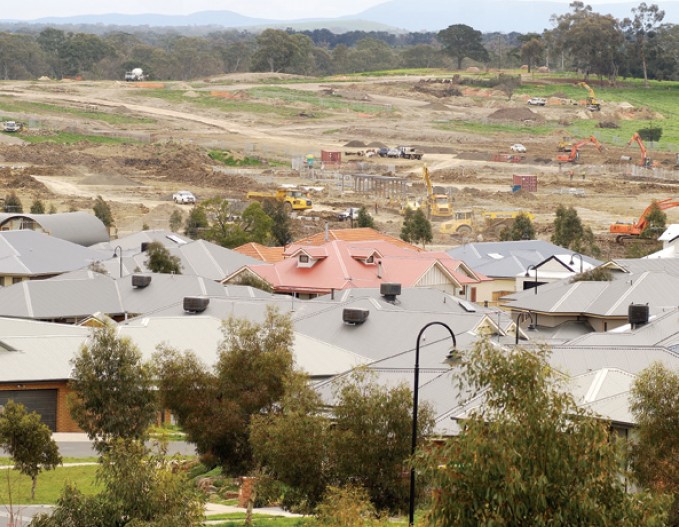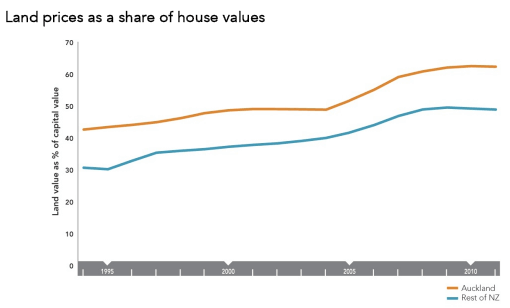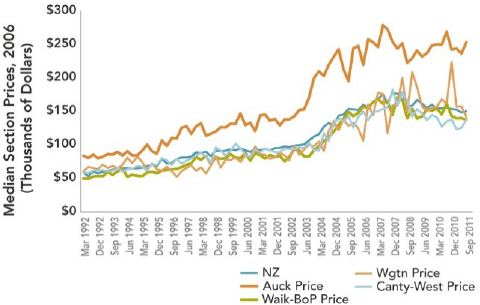
In late 2011, I published a detailed article entitled Why developers land bank, which sought to explain the reasons and motivations behind land banking.
A central theme of my article was that land banking is often a rational response to regulatory (or other) restrictions on land supply:
…land banking – an especially baneful form of rent seeking at the current time – is more prevalent in situations where land supply is constrained and planning approval processes are slow and uncertain. Land banking is also only profitable where the value of land is rising faster than the cost of capital. And in the absence of physical barriers to land supply, land price increases above the level of inflation are driven primarily by policies and regulations that artificially restrict the supply of land.
It stands to reason, then, that the removal of regulatory constraints on the supply of land, along with more permissive planning policies and infrastructure provision, would increase competition amongst both developers and land owners, thereby driving down the cost of land/housing. The existence of high levels of competition would, in turn, make land banking particularly risky, as another nearby owner would always have the opportunity to move to the market ahead of the land banking firm.
…if there is no growth boundary or greenbelt, and there is ample land zoned for development, there should be no shortage of property owners further afield who will sell at prices similar to agricultural land prices.
The Auckland housing market has long been held-up as a prime example of a market where land-use restrictions, particularly Auckland’s strict urban growth boundary (called the “Metropolitan Urban Limit” or MUL), has lead to strong land price appreciation and the prevalence of land banking activities by developers and speculators alike.
Last year, the New Zealand Productivity Commission released findings from its housing affordability inquiry, which were scathing of land-use planning in New Zealand, citing a body of evidence showing that strict policies of urban containment and slow development approval times had adversely affected the rate of new home construction and housing affordability.
In particular, the Productivity Commission’s Report noted that the land value of housing had risen significantly, particularly in Auckland, with land-use constraints a key driver of this escalation (see next chart).

Moreover, the Productivity Commission’s report showed that the cost of new housing blocks had escalated in real terms, particularly in Auckland:

In a similar vein, research released in 2010 by Motu Economic and Public Policy Research found that “land just inside the MUL boundary is valued (per hectare) at approximately 10 times land that is just outside the boundary”.
Over the weekend, the New Zealand Herald published an article providing one of the clearest examples of land banking that I have seen, and the pernicious effects that it is having on Auckland developers and housing affordability:
A land banking business with a big piece of residentially zoned real estate on Auckland’s outskirts has made more than $6 million a year for almost two decades – doing nothing.
QV records shows Yi Huang Trading Company owns 39 Flat Bush School Rd, which it bought in 1995 for $890,000.
Now, this 29ha block is listed on the market for $112.6 million, promoted as “the land of opportunity, vacant but close to Barry Curtis Park”…
The sale has left developers fuming. They say land bankers are ruining the city and that the sale will be tax-free because the company has held the land for so long…
Developers say Auckland Council officials have blamed them for building high-priced houses but they say land speculators took a bigger toll because they were inactive and reaped rich rewards for locking land away from being put to productive purposes. If it achieves the full asking price, then each year the company has held the land it made $6.2 million, they said, for doing nothing.
Let’s not kid ourselves here, the opportunity for Yi Huang Trading Company to make extraordinary profits via land banking only exists because Auckland’s planners have outlawed development outside of the MUL. Accordingly, they have effectively granted all land holders within the MUL quasi-monopoly rights, enabling them to jack-up prices and hold developers to ransom, since they have no other options for purchasing vacant land for development. The developers, in this instance, are the meat in the sandwich, forced to pay over the odds for land or go out of business. And since land costs have been inflated so much, developers are unable to provide affordable homes to the market.
If there were minimal regulatory restrictions on land supply in Auckland, Yi Huang Trading Company would be unable to extract extraordinary profits. Developers would have the option to purchase land outside of the current MUL and increased competition between land holders would drive prices down towards their agricultural values.
It’s not like Auckland and its surrounding areas doesn’t have ample land that could be made available for development. Nearly all of all Auckland’s regional rural land is held as unproductive lifestyle blocks which are in effect super low density urban residential lots appropriate for subdivision. In fact, the number of lifestyle blocks has exploded across New Zealand, increasing by around 75,000 to 175,000 over the past 13 years, and now consuming roughly 873,000 hectares (8,730 sq km) of land, compared with only around 180,000 hectares (1,800 sq km) of land used for urban uses.
In short, it is the Auckland Council that is primarily to blame for land banking and the city’s sky-high land/house prices. If they allowed open competition between land holders and developers, land prices would be much lower and homes would be far more affordable. This isn’t rocket science.

